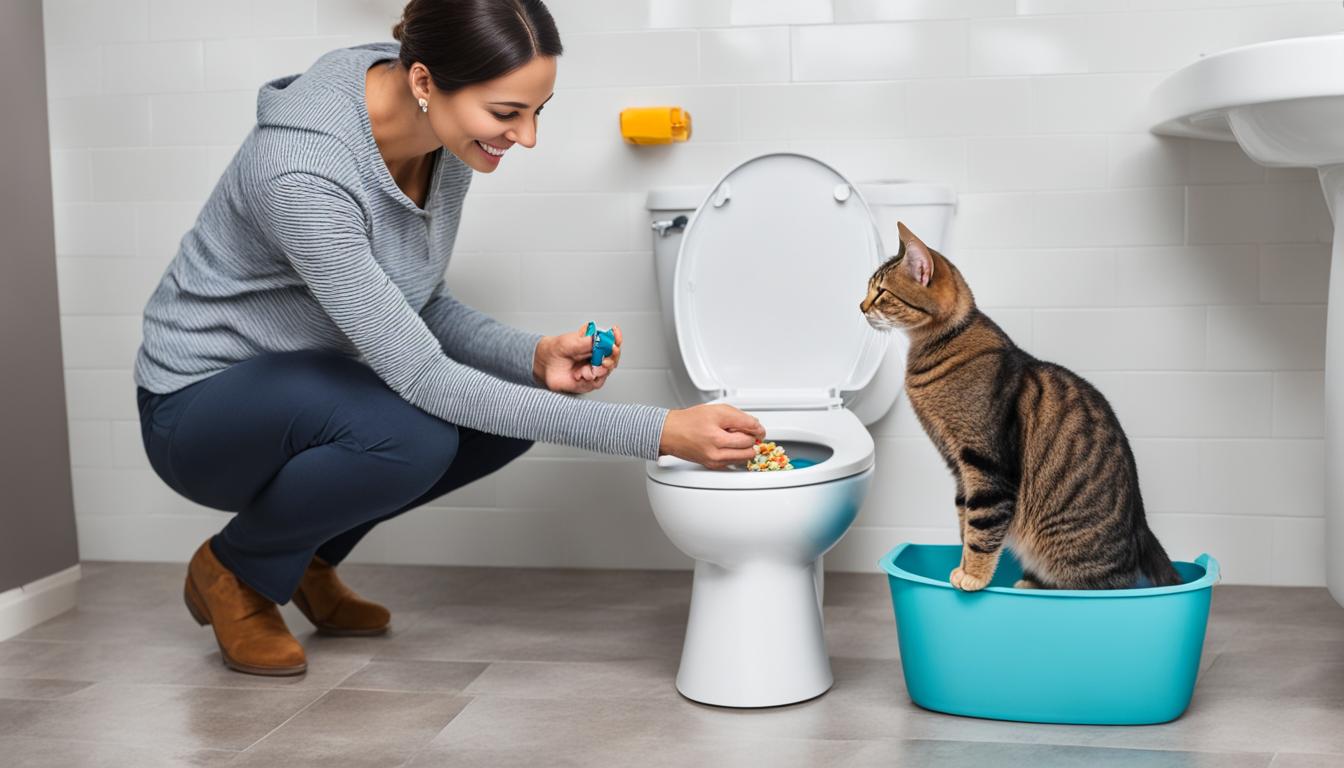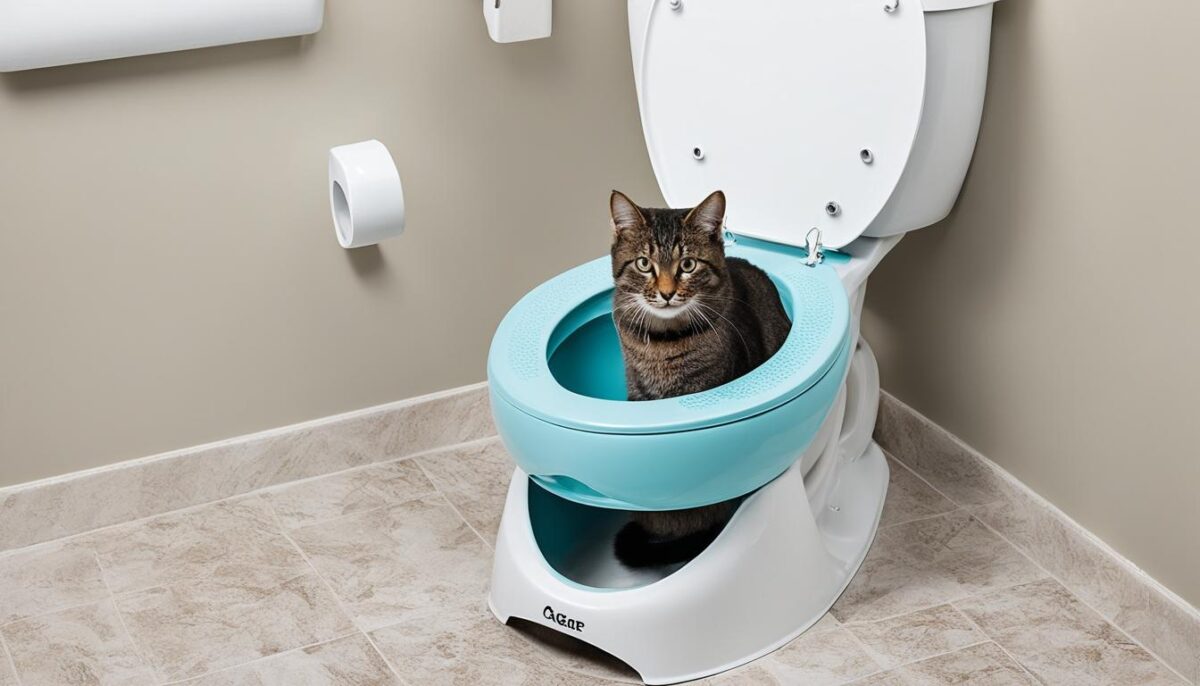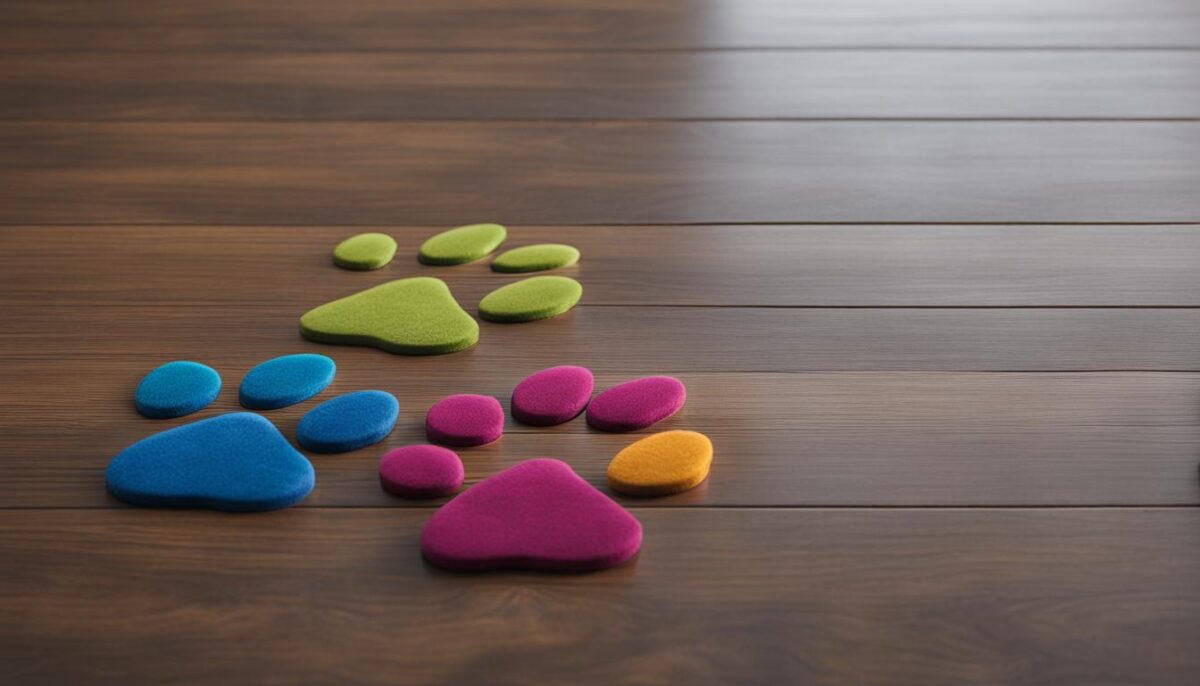Do you want your furry friend to use the toilet just like you? It might sound tricky, but with some patience and the right steps, toilet training cats can become a reality. Toilet training can help your cat leave those kitten litter habits behind and make the big move from litter box to toilet. It’s a cleaner choice for your home and can save you from constantly buying and changing litter. So, let’s make potty time a breeze for both you and your pet!
Key Takeaways
- Starting with the litter box near the toilet is the first step in cat potty training.
- Move slowly when you help your cat transition from litter box to toilet.
- Using flushable litter and a training box will make things easier for both of you.
- Always reward your cat for using the toilet properly—treats can work wonders!
- Remember, not all cats will learn to flush, but that’s totally okay.
Understanding the Basics of Toilet Training Cats
When you start to teach your cat the basics of using the toilet, it’s like you’re giving them a special job. You have to set up a special spot just for them, and it’s best if it’s a place they can get to really easy. Imagine how awesome it would be if your furry friend could use the potty like a pro! Let’s talk about how you can help them learn.
First things first, you’ll need some supplies. There’s a special seat that you fix onto your toilet for your cat to sit on. Plus, you need litter that you can flush down the toilet. Cats are clever and they can learn to use a hole in the seat that gets bigger bit by bit. This way, they won’t be too surprised when they start using the toilet like you do.
Brands like CitiKitty or Litter Kwitter have come up with their own types of seats to help you and your cat. They have unique features to make things easier. Training a cat isn’t a race — it’s all about going slow, being kind, and understanding how they feel. You don’t want them to get upset because that won’t help at all!
| Features | CitiKitty | Litter Kwitter |
|---|---|---|
| Design | Single-level | Multi-platform |
| Transition Speed | At your pace | Step by step |
| Material | Soft plastic | Durable plastic |
| User-Friendly | Yes | Yes |
| Type of Litter | Flushable | Flushable |
Place the special seat or the litter box at a height that your cat likes and in a place that they think is nice. Always leave the toilet lid up so they can hop on whenever they need to go. Sometimes, things might not go as planned. If your cat has a little accident, just clean it up fast and maybe go back a step in the training.
“You’re doing great, kitty! Remember, every cat learns at their own pace, and that’s okay.”
Keep your head up and keep on going. It’s all about making your kitty feel good about their new potty place!
Preparing Your Home for Cat Toilet Training
Getting your home ready for cat toilet training setup is important. You want to make sure your furry friend has the best start. Let’s find a good spot, pick out the right seat, and make things cozy and happy for your cat.
Choosing the Right Location for Training
Pick a bathroom your cat can get to easily. This will be where you start the training. Put the litter box right next to the toilet so your cat knows this is the place to go. It’s kind of like setting up a special bathroom just for your cat!
Selecting the Appropriate Cat Training Seat
When it’s time to pick a training seat selection, you’ve got options. You can make one with an aluminum tray and tape, or get a cool seat like CitiKitty or Litter Kwitter. These seats help your cat learn how to go potty on the toilet instead of the litter box.
Creating a Positive and Stress-Free Environment
To help your cat learn, use positive reinforcement. That means giving your cat treats and love when they use the training seat right. Also, make sure the bathroom is quiet and calm, so your cat isn’t scared or upset when trying to go.
Toilet Training Cats: Mastering the Gradual Transition
Teaching your cat to use the toilet takes patience. You’ll want to help your furry friend learn this new skill without rushing them. Here’s how you can support them in a gradual transition during their toilet training steps.
First, start with the litter box they already know. Each day, raise the box a little higher, getting closer to the toilet seat. You’re also going to use less litter to get your cat used to a different feel. Imagine moving up a staircase – step by step is the best way to go!
- Day 1: Litter box right next to the toilet.
- Day 2-7: Raise the box a bit every day.
- Day 8: Litter box should be at the same height as the toilet.
It’s like a mini-adventure for your cat, but without any scary surprises. After the litter box and toilet seat are good friends (meaning, at the same height!), you’ll introduce a special seat. It’s like a mini sandbox that fits on the toilet, but with much less cat litter modification needed.
| Week | Training Step | What You Should Do |
|---|---|---|
| 1-2 | Introducing Training Seat | Put a training seat on the toilet with a bit of flushable litter. |
| 3-4 | Increasing Hole Size | Change to a seat with a bigger hole and less litter as your cat adjusts. |
| 5+ | Removal of Training Seat | When ready, take the seat away. Now your cat is toilet trained! |
Remember, every cat is different and yours might take more or less time that’s totally okay. If they have an accident, clean it up with a special cleaner that removes the smell so they won’t go back there again. Offer a little treat or a gentle pet to tell them they’re doing great!
With a little time and a lot of love, your cat will be using the toilet like a champ. All it takes is helping them along with each step, and never forgetting to celebrate their successes! Soon, you’ll both appreciate the cleaner, litter-free life.
Addressing Common Challenges in Toilet Training
Having trouble with overcoming toilet training issues? You’re not alone. Cat toilet training difficulties can happen, but these consistent training tips will help you and your kitty succeed.
Sometimes, cats feel scared or just do not want to use the toilet at first. If your fur baby makes a mess outside the toilet, it’s okay. Go back to the step they did well, and give lots of love and patience. Keep the litter box clean to make sure your kitty likes it there!
- Think about if toilet training is right for your cat. Maybe your furry friend is too shy or young, or has used a litter box for a long time.
- If there’s an accident, clean it up and try again from the last step that worked.
- Help your cat feel safe and happy when training by keeping things calm.
If your kitty keeps having trouble, maybe it’s time to check with the vet. Some kitties need a little extra help, and that’s perfectly fine. Remember, being patient and doing the same steps each day will help a lot!
| Problem | Tip |
|---|---|
| Cat is afraid of the toilet | Move the litter box closer to the toilet slowly, so they get used to it. |
| Cat keeps making mistakes | Go back one step in training where they did good and try again. |
| Cat seems stressed | Make sure the bathroom is quiet and no one bothers them while training. |
Conclusion
If you’ve been following along with our cat toilet training guide, you’ve learned a lot about patience and consistency. Teaching your cat to use the toilet instead of a litter box may take some time, but remember, if you stick with it, keep calm, and use yummy treats, you might see some great results. Every cat is different, so some may learn quicker than others, and that’s perfectly fine.
Maintaining Patience and Consistency
To have successful cat toilet training, you need to be patient. Just like when you learn something new, your cat needs time to get it right. Be kind and give your cat time to learn. If you stay calm and keep trying the same steps each day, you help your cat get better at toilet training. When your cat does a good job, a little treat can make them happy and want to try again!
The Benefits of Successful Toilet Training
There are some really neat things that can happen when your cat learns to use the toilet. You won’t have to buy as much kitty litter, which saves you money. Also, your house might smell better without a litter box. Plus, it’s clean and tidy! When you and your cat finish this training, you both will feel happy. So, keep having fun and don’t worry if it takes a little while. When things work out, you’ll be glad you and your cat learned something new together!
FAQ
Can all cats be toilet trained?
While many cats can be toilet trained, it’s not suitable for every cat. It’s best for younger, adaptable, and confident cats. Shy cats or those with preexisting litter box issues may find it challenging.
What supplies do I need to start toilet training my cat?
You’ll need a training seat like CitiKitty or Litter Kwitter, flushable litter, treats for reward, and patience. Some owners may also use homemade tools like duct tape and an aluminum tray to create a DIY training seat.
How do I introduce my cat to the toilet training seat?
Begin by placing the litter box next to the toilet to acclimate your cat, then gradually move it closer to the toilet and elevate it to the seat height. After your cat is comfortable, replace the litter box with the training seat.
How long does it typically take to toilet train a cat?
The training process varies with each cat, but it can take anywhere from a few weeks to several months. It’s important to move at a pace that’s comfortable for your cat and to remain patient throughout the process.
How do I handle setbacks or accidents during toilet training?
Be patient and clean any accidents with an enzymatic cleaner to remove odors. If your cat has a setback, return to the previous successful step and continue to encourage and reward your cat from there.
Will I save money by toilet training my cat?
Yes, toilet training your cat can lead to savings on litter and potentially prevent litter-related odors and messes in your home.
Is it necessary to teach my cat to flush the toilet?
No, it’s not recommended to teach your cat to flush the toilet as it may lead to unnecessary water waste. Always flush the toilet yourself after your cat has used it.
Should I eliminate the litter box entirely after my cat is toilet trained?
It’s recommended to keep at least one litter box in the home even after successful toilet training, as a backup in case of regressions or as a comfort zone for your cat.
How do I ensure the toilet training process is stress-free for my cat?
Create a positive and stress-free training environment, offer incentives like treats, and ensure you don’t rush or force your cat. Maintaining a routine and being attentive to your cat’s behavior can also help ease the transition.
What can I do if my cat absolutely refuses to use the toilet?
Some cats may never adapt to toilet training. If your cat is resistant despite your best efforts, it’s okay to stick with a traditional litter box. The comfort and well-being of your cat are the most important considerations.


